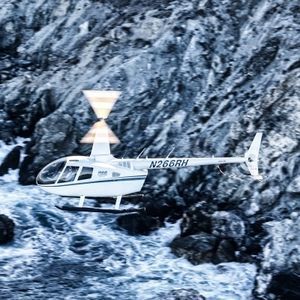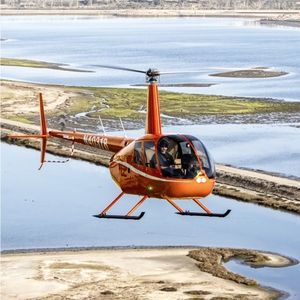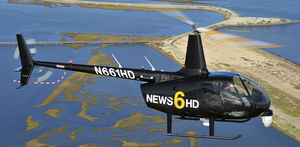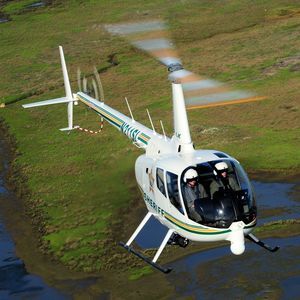
3 - 5 Pers. helicopter R44 RAVEN II utilityturbinesingle-rotor
Add to favorites
Compare this product
fo_shop_gate_exact_title
Characteristics
- Passenger capacity
- 3 - 5 Pers.
- Mission
- utility
- Type of engine
- turbine
- Other characteristics
- single-rotor
- Range
- 500 - 1000km
- Payload
- 1000 - 5000 kg
Description
Four-seat R44 RAVEN II and CLIPPER II helicopters are high performing, reliable, and easy to maintain. R44s have a two-bladed rotor system, T-bar cyclic, streamlined instrument panels, and a crashworthy fuel system. An aluminum monocoque and powder-coated steel tube structure provides a lightweight, yet robust airframe while the aerodynamic fuselage optimizes airspeed and fuel economy. Hydraulically boosted controls eliminate cyclic and collective feedback forces and provide responsive handling. A low tail-rotor tip speed and large cambered tail reduce flyover noise. Raven II and Clipper II helicopters are powered by Lycoming’s IO-540 fuel injected engine. The IO-540 delivers improved altitude performance, increased payload, and eliminates the need for carburetor heat.
The CLIPPER II may be equipped with either fixed utility or pop-out floats, offering safety for over-water travel. Designed for emergencies, pop-out floats inflate within 2-3 seconds of activation. When not in use, pop-out floats roll-up and stow in protective covers along the aircraft’s landing skids. The streamlined, low profile design minimizes drag and allows for easy entry and exit of the cabin. Fixed utility floats remain fully inflated, add approximately 50 pounds to the aircraft’s empty weight, and reduce cruise speed by approximately ten knots.
Catalogs
*Prices are pre-tax. They exclude delivery charges and customs duties and do not include additional charges for installation or activation options. Prices are indicative only and may vary by country, with changes to the cost of raw materials and exchange rates.











